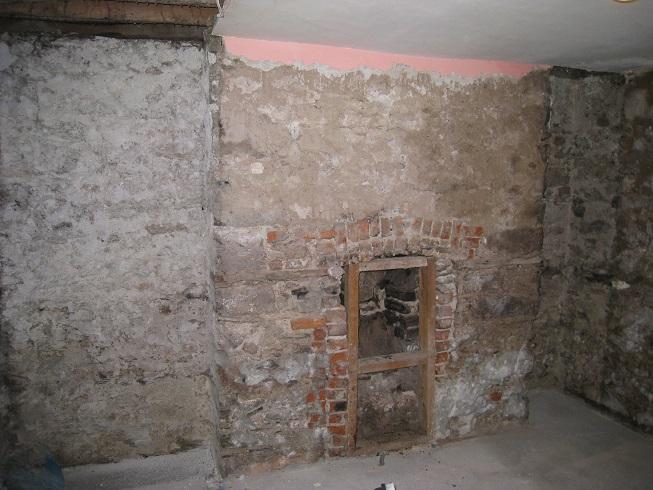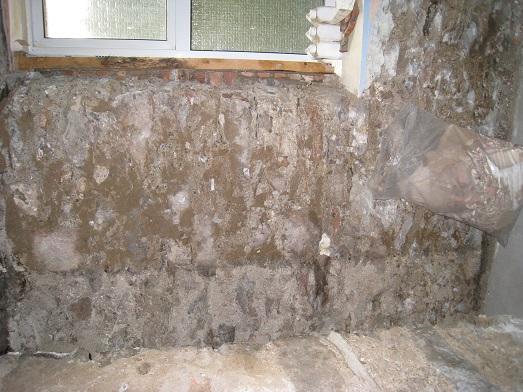- Joined
- 31 Aug 2013
- Messages
- 261
- Reaction score
- 1
- Country

Hi everyone,
Just wanted to get a heads up on what I have planned for this basement wall.
The wall in the picture is a party wall not an earth retaining wall, in fact despite having a basement none of the walls are earth retaining. The earth is retained in the garden with another wall.
Now I am intending to use cement, sika waterproofer and sharp sand and render this wall. I then intend to paint on something called a cementone aquaprufe, which is a cold applied bitumen to the wall, and then finally dot and dab standard 12.5mm plasterboard to the wall, and then skim with finishing plaster.
My question is, is there a maximum thickness I should not exceed when I render with the cement? Will I get cracking? The front section of the basement had been rendered by the previous owners and is 20mm.
There is an opening for the fireplace which I will fix 12.5mm board to and a vent to allow for ventilation. The concrete floor has a DPM in it fortunately.
I just want to make sure I'm doing the right thing if I can have some opinions from you chaps? Thanks
P.S I am going to take more of the lime off the wall before I start because there is still quite a bit on there and may take the ceiling off where it abuts the wall. That pink stuff at the top is the old lime render with horrible pink decorating scheme
Just wanted to get a heads up on what I have planned for this basement wall.
The wall in the picture is a party wall not an earth retaining wall, in fact despite having a basement none of the walls are earth retaining. The earth is retained in the garden with another wall.
Now I am intending to use cement, sika waterproofer and sharp sand and render this wall. I then intend to paint on something called a cementone aquaprufe, which is a cold applied bitumen to the wall, and then finally dot and dab standard 12.5mm plasterboard to the wall, and then skim with finishing plaster.
My question is, is there a maximum thickness I should not exceed when I render with the cement? Will I get cracking? The front section of the basement had been rendered by the previous owners and is 20mm.
There is an opening for the fireplace which I will fix 12.5mm board to and a vent to allow for ventilation. The concrete floor has a DPM in it fortunately.
I just want to make sure I'm doing the right thing if I can have some opinions from you chaps? Thanks
P.S I am going to take more of the lime off the wall before I start because there is still quite a bit on there and may take the ceiling off where it abuts the wall. That pink stuff at the top is the old lime render with horrible pink decorating scheme


